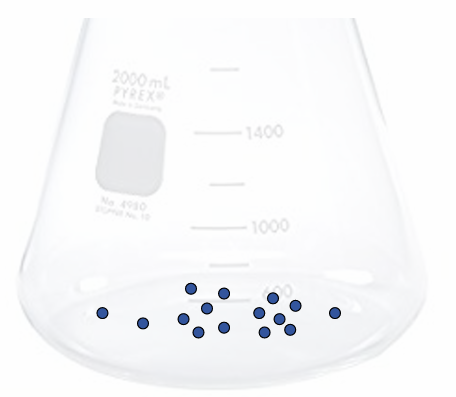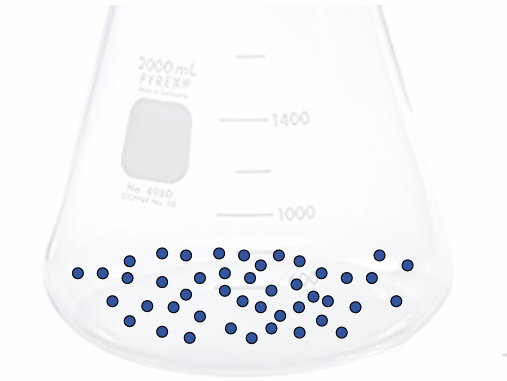Gravimetric Analysis Lecture Notes
1/51
Earn XP
Description and Tags
Flashcards covering key concepts, terms, and definitions related to gravimetric analysis as discussed in the lecture notes.
Name | Mastery | Learn | Test | Matching | Spaced |
|---|
No study sessions yet.
52 Terms
Gravimetric Analysis
Quantitative methods based on determining the mass of a pure compound related to the analyte.
Precipitation Gravimetry
An analyte is separated as a precipitate and converted to a compound of known composition that can be weighed.
Volatilization Gravimetry
An analyte is converted to a gas of known chemical composition; the mass of gas is used to measure analyte concentration.
Electrogravimetry
The analyte is separated by deposition on an electrode using an electrical current.
Gravimetric Titrimetry
Uses mass of a reagent with known concentration to completely react with the analyte.
Mass Spectrometry
Technique that uses a mass spectrometer for analysis of compounds.
Precipitating Reagents
Substances that react with the analyte to form a solid precipitate.
Coagulation
Process by which colloidal particles are agglomerated, often aided by heating, stirring, or adding an electrolyte.
Colloidal Precipitates
Precipitates that are too small to be retained by ordinary filters and are stabilized by charged particles.
Crystalline Precipitates
Easily filtered and purified solids with controlled particle size.
Coprecipitation
Removal of soluble compounds during the formation of a precipitate.
Nucleation
The initial process where a minimum number of atoms, ions, or molecules join to form a stable solid.
Particle Growth
Process where dissolved solute deposits on existing nuclei, increasing their size.
Relative Supersaturation (Q - S)/S
Measure of how much solute is available in solution compared to its equilibrium solubility.
the way net effect is being accounted by
Peptization
The process wherein a coagulated colloid reverts to its original dispersed state.
Ignition of Precipitates
Heating that decomposes the precipitate to form a compound of known composition.
Specifically - Selectively
Ideally a precipitating agent should react ________ or at least _______ with the analyte.
Specific Reagents
rare
Selective Reagents
react with a limited number of species
Large Particles
are easy to filter
easy to wash free of impurities, usually purer than fine particles
Colloidal Suspension
10^-7 to 10^-4 cm in diameter, do not settle from solution
difficult to filter
Crystalline Suspension
size is less than or equal to 0.1 mm, tend to settle spontaneously
easily filtered
Tyndall Effect
when light is scattered due to colloidal particles
Colloidal
When (Q-S)/S is large, precipitate tends to be _________
Crystalline
When (Q-S)/S is small, precipitate tends to be _________
Q
Used in the formula for Relative Supersaturation:
is the concentration of solute at any instant
S
Used in the formula for Relative Supersaturation:
equilibrium stability
Nucleation and Particle Growth
What are the two mechanisms of precipitate formation?
Nucleation
If _________ predominates, a precipitate containing a large number of small particles is produced
Particle Growth
If ___________ predominates, a smaller number of large particles is produced
Particle Growth
Molecular Visualization:

Nucleation
Molecular Visualization:

Elevated Temperature
increase solubility of the precipitate
Brownian Motion
prevents gravity settling
Washing
minimizes contamination;
it also removes some of the electrolyte responsible for coagulation, thus increasing the volume of the counterion later, reestablishing the repulsive forces
Filterability
this is characterized by a liquid or substance's ability to be filtered
is improved if allowed to stand for an hour with the hot solution
Mother Liquor
is the hot solution which will be used to improve the filterability of a solution
is the original solvent from where the precipitates where formed
Digestion
is the process which improves the purity and concentration of the precipitate by increasing the particle size of the precipitate
Minimizing Q
Improving the sizes of the particles:
use dilute solutions, add precipitating reagent slowly, good mixing
Increasing S
Improving the sizes of the particles:
precipitating from hot solution, adjusting pH of precipitation medium
Surface Adsorption, Mixed-Crystal Formation, Occlusion, Mechanical Entrapment
Four Types of Coprecipitation
Contamination
is not the same as coprecipitation (is broader)
a second substance precipitates because its Ksp has been exceeded
Surface Adsorption
major source of contamination in coagulated colloids
not significant in crystalline precipitates due to small surface area
Surface Adsorption
is a normally soluble compound; i.e. an adsorbed ion with the opposite charge of the counterion layer, is carried out from solution on the surface of a coagulated colloid, which has a large surface area
Mixed-Crystal Formation
one of the ions in the crystal lattice of a solid is replaced by an ion of a different element
Occlusion
compounds are trapped within a pocket formed during rapid crystal growth;
amount of this material is greatest in the part of a crystal that forms first
Mechanical Entrapment
happens when crystals lie close together during growth, trapping a portion of the solution in a pocket
Occlusion and Mechanical Entrapment
Both _________ and ___________ happen with crystalline precipitates.
Positive error
Coprecipitated impurities:
if contaminant is not a compound of the ion determined _________ will result
Either positive or negative errors
Coprecipitated impurities:
when the contaminant contains the ion being determined
Heating
removes solvent and any volatile species carried down with the precipitate
Ignition
decomposes the precipitate to form a compound of known composition, called the weighing form